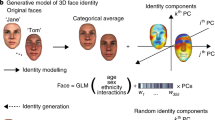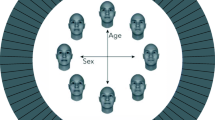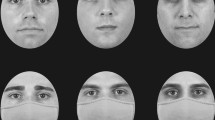Abstract
College students (521) participated in this research program designed to study the extent to which memory for faces can be altered. Pilot results indicated that subjects who viewed a face and then heard a description of that face ostensibly written by another witness were influenced by that description. Specifically, subjects adopted the verbal expressions of another witness even when those expressions were in error. Furthermore, subjects who heard a misleading detail had a tendency to incorporate that detail into their reconstructions of the original face; subjects who did not hear the misleading detail rarely did so. These findings were further explored in three larger-scale experiments. In each of the three experiments, subjects viewed a target individual in a photograph (Experiment 2), in a film (Experiment 1), or live (Experiment 3). Subsequently, some subjects were exposed to misleading information via a version of the target individual ostensibly given by another witness (Experiments 1 and 2). The major results were as follows: (1) Experiment 1: If another witness referred to a misleading feature, over a third of the subjects included that detail in their own description, using the exact wording that the other witness had used. Control subjects rarely did so (5%). (2) Experiment 2: If the other witness referred to a misleading detail, nearly 70% of the subjects later “recognized” an individual with that feature. Control subjects did so far less often (13%). (3) If subjects were questioned with leading questions containing misinformation about a critical feature (moustache), over 30% indicated that they had seen the critical feature. Control subjects rarely did so (4%). These results show that memory for a face is affected by the introduction of subsequent misleading information about that face, contradicting the view that faces are special in their lack of susceptibility to interference. These results have important implications for police practices regarding eyewitness recognition.
Similar content being viewed by others
Reference Note
Carr, T. H., Deffenbacher, K. A., & Leu, J. R.Is there less interference in memory for faces? Paper presented at the meeting of the Psychonomic Society, Phoenix, Arizona, 1979.
References
Bull, R. & Clifford, B. Eyewitness memory. In M. M. Gruneberg & P. E. Morris (Eds.).Applied problems in memory. London: Academic Press, 1979.
Carmichael, L. L., Hogan, H. P., & Walter, A. A. An experimental study of the effect of language on the reproduction of visual perceived form.Journal of Experimental Psychology, 1932,15, 73–86.
Clifford, B. R., & Bull, R.The psychology of person identification. London: Routledge & Kegan Paul, 1978.
Davies, G., Shepherd, J., & Ellis, H. Effects of interpolated mugshot exposure on accuracy of eyewitness identification.Journal of Applied Psychology, 1979,64, 232–237.
Doob, A. N., & Kirshenbaum, H. M. Bias in police lineups—partial remembering.Journal of Police Science and Administration, 1973,1, 287–293.
Gorenstein, G. W., & Ellsworth, P. Effect of choosing an incorrect photograph on a later identification by an eyewitness.Journal of Applied Psychology, in press.
Loftus, E. F.Eyewitness testimony. Cambridge. Massachusetts: Harvard University Press, 1979.
Loftus, E. F., & Palmer, J. C. Reconstruction of automobile destruction: An example of the interaction between language and memory.Journal of Verbal Learning and Verbal Behavior, 1974,13, 585–589.
Riley, D. A. Memory for form. In L. Postman (Ed.)Psychology in the making. New York: Knopf, 1962.
Wall, P. M.Eye-witness identification in criminal cases. Springfield, Illinois: Charles C. Thomas, 1965.
Yin, R. K. Looking at upside-down faces.Journal of Experimental Psychology, 1969,81, 141–145.
Author information
Authors and Affiliations
Additional information
This research was supported by the National Science Foundation.
About this article
Cite this article
Loftus, E.F., Greene, E. Warning: Even memory for faces may be contagious. Law Hum Behav 4, 323–334 (1980). https://doi.org/10.1007/BF01040624
Issue Date:
DOI: https://doi.org/10.1007/BF01040624




